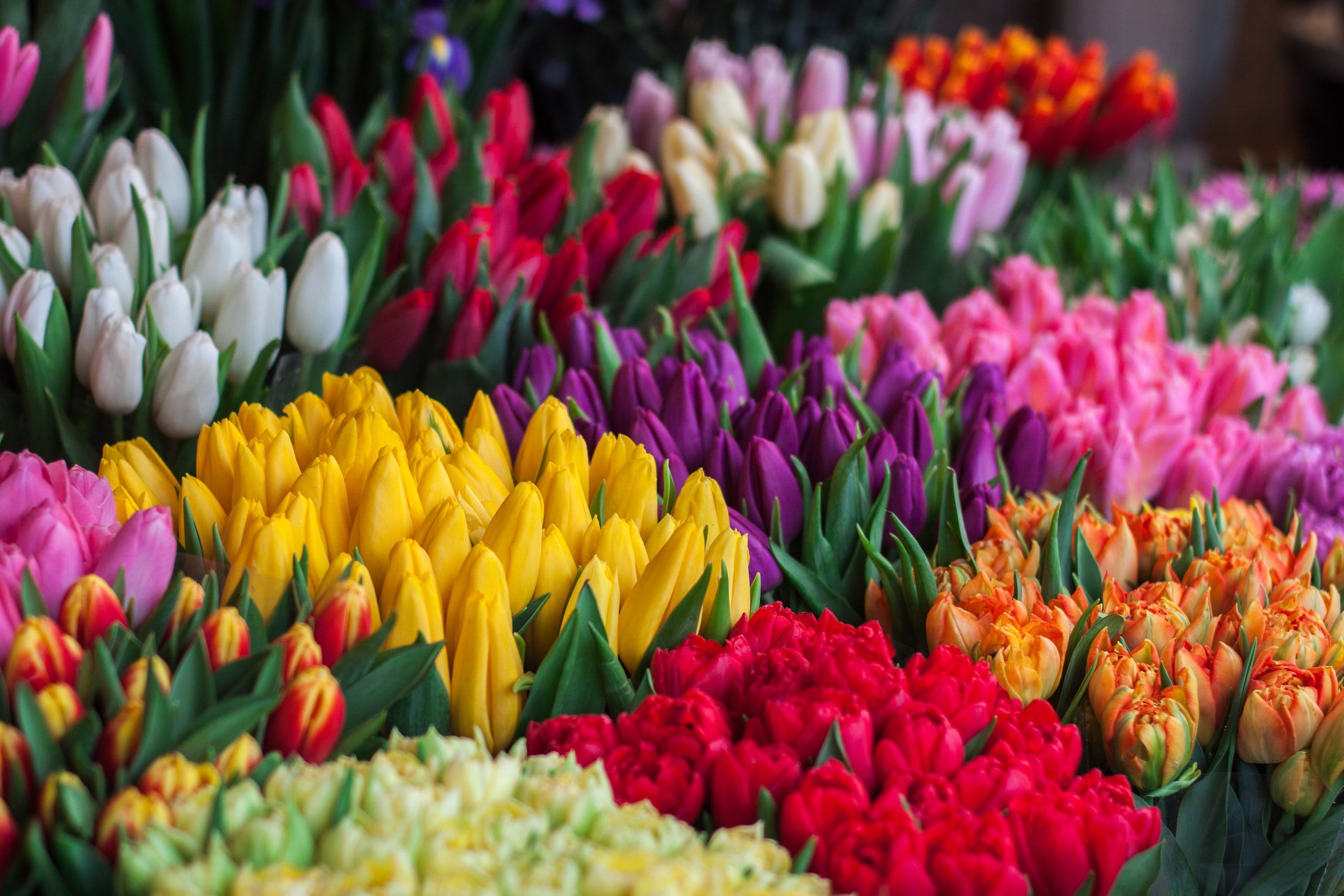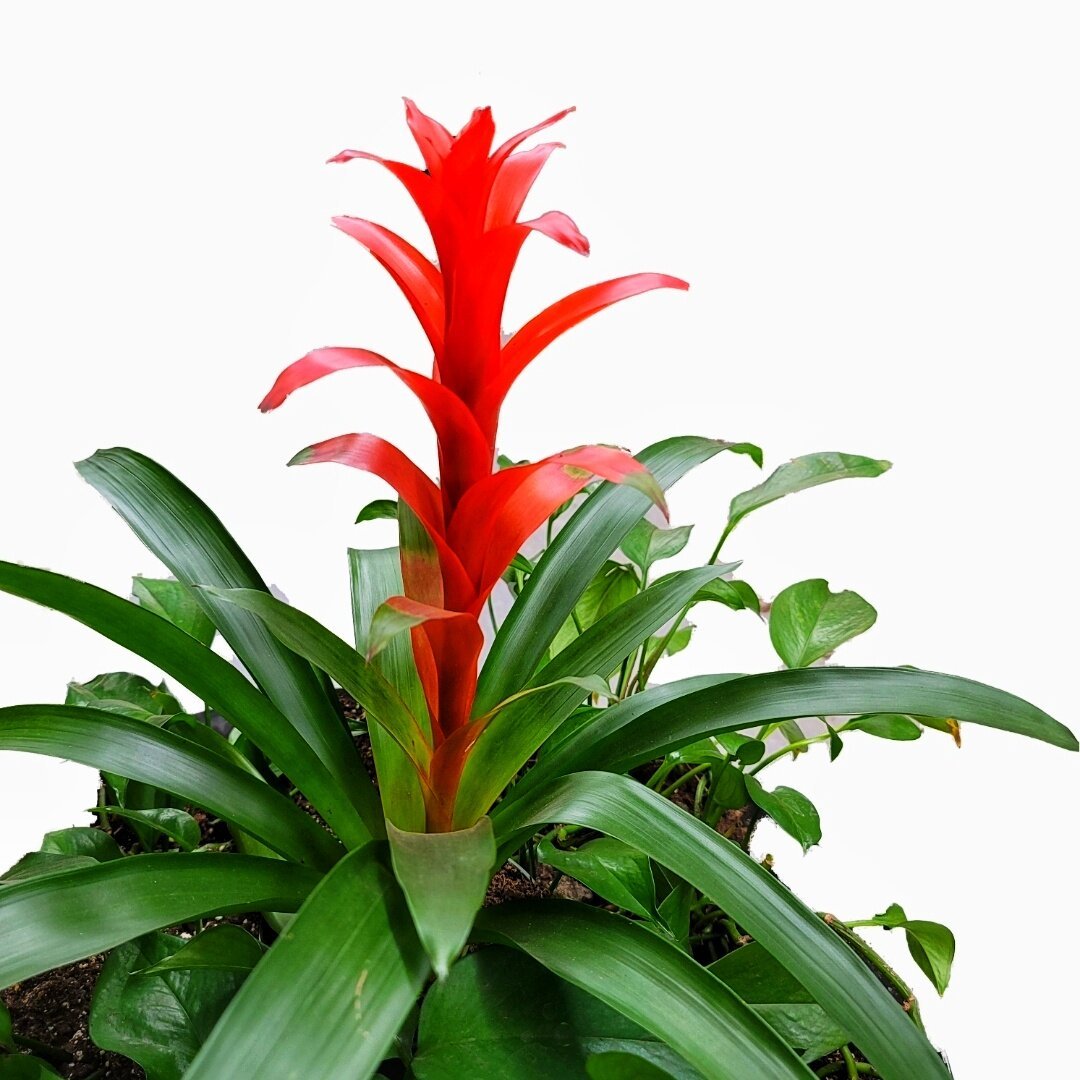
Color Program
-

January 1 -Bromeliads
Almost all have colorful bracts that hold (generally) non-showy flowers. Homeowner care is the same for most varieties. Water the soil when dry (the pot will feel light). The better indoor light you have, the longer they’ll last (sometimes up to 6+ months!). Super intense heat and light will burn the plant, shortening its life. This is a tropical plant that grows in trees, so think bright shade and good moisture. Some literature says to water the cups of the leaves. True in nature but this greenhouse grown plant will often rot if you do so.
-

FEBRUARY 3 - TULIPS
Yes! The same spring flowers you see in you neighboring yards, when it warms up. We bring these in, often while they are not showing color. Over the span of a week, they shoot up and show their spirit. And then... they are done. But you can take the plants home, keep them in the garage until spring and then plant into your landscaping.
-

FEBRUARY 7 - CYCLAMEN
In their native lands Cyclamen thrive in cool temperatures that drop as low as 40 degrees F. at night and rise into the 60s during the day. Place them close to a bright south-, east-, or west-facing window for maximum sunlight. Careful when watering not to get the tuber at the soil line wet. It's best to let the soil get somewhat dry between waterings, but not to the point of wilting. When the pot feels light or the soil feels dry just below the surface, water it thoroughly and let it drain. Cyclamen go into a rest phase for the summer after flowering.
-

FEBUARY 21 - Chrysanthemum
This plant comes in a wide range of colors and flower shapes. Keep them moist, not wet, and in as much sun as possible. They do prefer cool temps and will last longer if kept from the heat. Some of the green house varieties will do ok if planted in the landscape, but no promises that they’ll return next year.
-

MARCH 6 - RIEGER BEGONIA
This plant is also called Non-stop Begonia as their flowers can last almost indefinitely. They’ll do best in bright light while keeping their soil most, but not wet.
-

March 20 - Hydrangea
Nothing says spring like the brightly colored hothouse Hydrangea. They are generally large plants in the little 6” pots and often need water twice a week to stay hydrated. Do not over-water, but keep them somewhat moist. Indoors they can take fairly full light and will last for weeks if cared for properly.
-

April 3 - Chrysanthemum
This plant comes in a wide range of colors and flower shapes. Keep them moist, not wet, and in as much sun as possible. They do prefer cool temps and will last longer if kept from the heat. Some of the green house varieties will do ok if planted in the landscape, but no promises that they’ll return next year.
-

April 20 - Bromeliads
Almost all have colorful bracts that hold (generally) non-showy flowers. Homeowner care is the same for most varieties. Water the soil when dry (the pot will feel light). The better indoor light you have, the longer they’ll last (sometimes up to 6+ months!). Super intense heat and light will burn the plant, shortening its life. This is a tropical plant that grows in trees, so think bright shade and good moisture. Some literature says to water the cups of the leaves. True in nature but this greenhouse grown plant will often rot if you do so.
-

June 16 - Anthurium
This tropical beauty could become your favorite. Treat it well with an east or west window and it could last for years in flower. Generally they do drop their flowers and enjoy some green growth and recovery, but the right location will make it happy. Water when the soil is just getting dry and ensure there is no standing water lingering more than a couple hours.
-

July 14 - Orange Chrysanthemums
Comes in a wide range of colors and flower shapes. Keep them moist, not wet, and in as much sun as possible. They do prefer cool temps and will last longer if kept from the heat. Some of the green house varieties will do ok if planted in the landscape, but no promises that they’ll return next year.
-

July 24 - Celosia
Celosia used for indoor displays tend to be very thirsty. They do like full sun but will survive in darker locations for a couple weeks. Wih good light and consistent watering, they will last many weeks.
-

August 7 - Riger Begonia
This plant is also called Non-stop Begonia as their flowers can last almost indefinitely. They’ll do best in bright light while keeping their soil most, but not wet.
-

August 21 - Calandiva
Calandiva, scientifically known as Kalanchoe blossfeldiana. 'Calandiva,' is a popular and visually striking succulent plant that has captured the hearts of plant enthusiasts and gardeners around the world. This lovely succulent is characterized by its charming and abundant clusters of vibrant, long-lasting, double-petaled flowers that resemble small roses. They prefer bright light and not tomuch water.
-

September 4 - Crossandra
Another favorite that is under-utilized in the market. Crossandra thrives in warm, humid environments and cannot tolerate cold weather. You can plant it outdoors in a shady spot or keep it potted indoors in the sun. It will flower for months.
-

September 29 Croton
This plant comes in a few varieties that all look somewhat similar. They are tropical foliage plants with a non-showy flower. The beauty is in the leaves. Rule of thumb, the more colorful, the more light is needed (and insects tend to like them too). Keep it clean by scrubbing 1x a month with dish soap solution. Bright light and not letting it go dry can keep it living indefinitely.
-

October 30 - Pele Mums
'Point Pelee' Chrysanthemum remains one of the most recognized and most popular varieties of all. Pelee provides outstanding blooms in long-lasting autumn colors.
-

November 17 & December 8 - Poinsettias
Another tropical plant with colorful bracts and indiscreet flowers. This guy does like the tropics. Think Mexico – heat and sun. They also like their water, especially if near a vent or warm window. On the flip side, keeping them soggy will end with a rotten plant. The bracts will actually hold the longest when in a cool, bright location. It is possible to save them from year to year, but to make them look good and flower at the right time will take some dedication.
